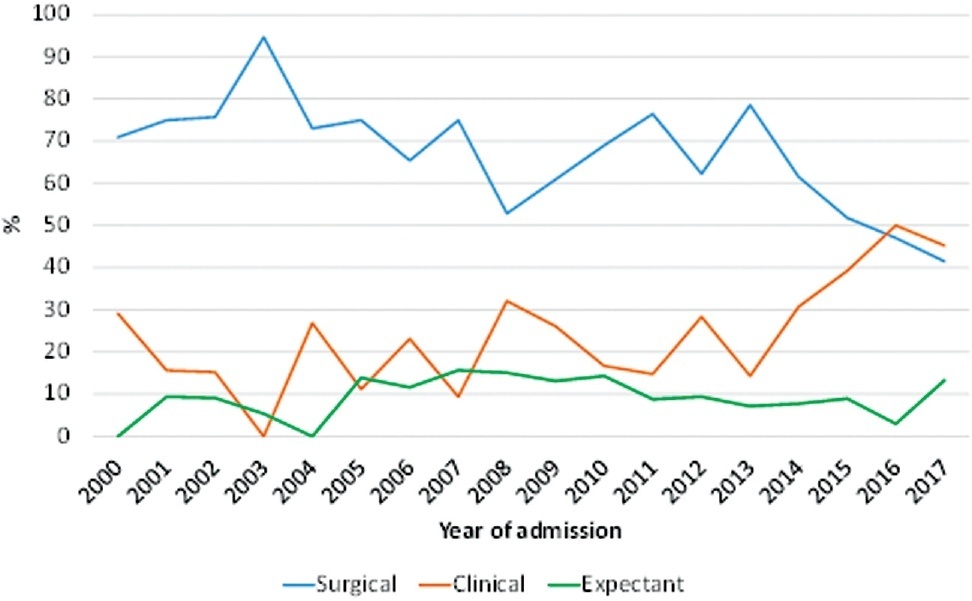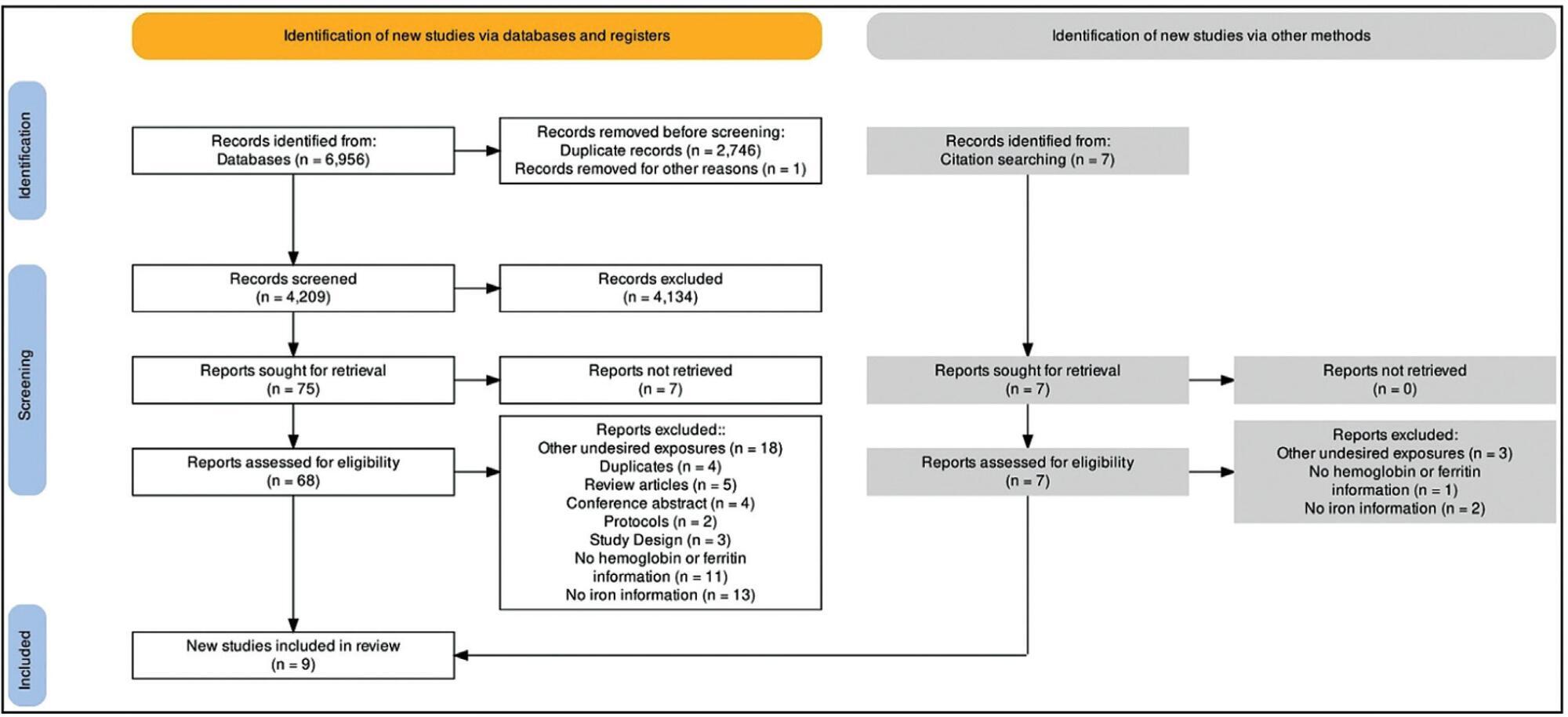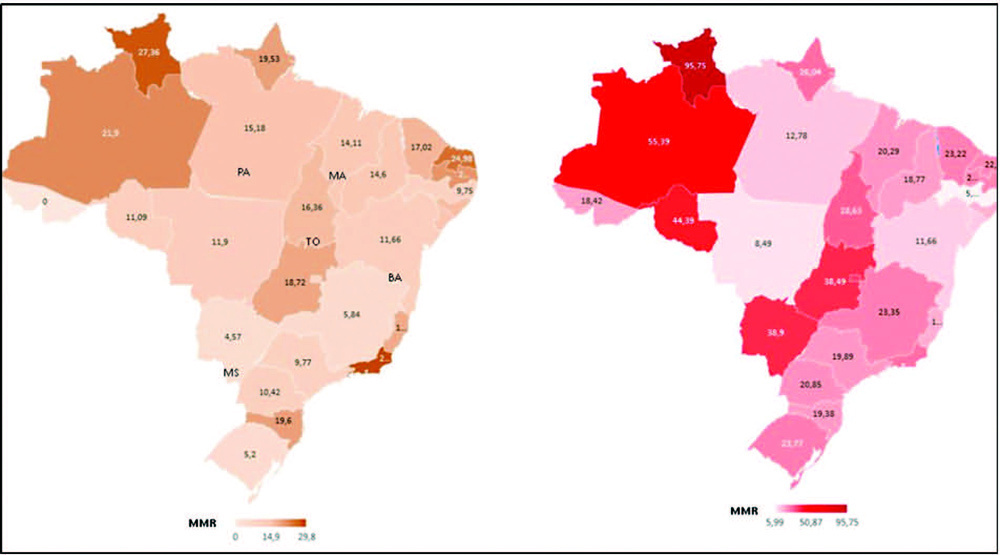Summary
Revista Brasileira de Ginecologia e Obstetrícia. 2023;45(3):149-159
This article aims to review the literature regarding the use of technologies to promote mental health for pregnant women. We seek to: understand the strategies that pregnant women use for mental health care. Also, we investigate the existence of scientific evidence that validates such practices.
This study follows the PRISMA guidelines for systematic reviews. We analyze 27 studies published between 2012 and 2019. We include publications in Portuguese, English, and Spanish.
The results revealed several different possibilities to use technology, including the use of text messages and mobile applications on smartphones. Mobile applications are the most commonly used approaches (22.5%). Regarding the strategies used, cognitive-behavioral approaches, including mood checks, relaxation exercises, and psychoeducation comprised 44.12% of the content.
There is a need for further investigation and research and development efforts in this field to better understand the possibilities of intervention in mental health in the digital age.
Summary
Revista Brasileira de Ginecologia e Obstetrícia. 2023;45(4):192-200
To evaluate the use of different treatment options for ectopic pregnancy and the frequency of severe complications in a university hospital.
Observational study with women with ectopic pregnancy admitted at UNICAMP Womeńs Hospital, Brazil, between 01/01/2000 and 12/31/2017. The outcome variables were the type of treatment (first choice) and the presence of severe complications. Independent variables were clinical and sociodemographic data. Statistical analysis was carried out by the Cochran–Armitage test, chi-square test, Mann–Whitney test and multiple Cox regression.
In total 673 women were included in the study. The mean age was 29.0 years (± 6.1) and the mean gestational age was 7.7 (± 2.5). The frequency of surgical treatment decreased significantly over time (z = -4.69; p < 0.001). Conversely, there was a significant increase in the frequency of methotrexate treatment (z = 4.73; p < 0.001). Seventy-one women (10.5%) developed some type of severe complication. In the final statistical model, the prevalence of severe complications was higher in women who were diagnosed with a ruptured ectopic pregnancy at admission (PR = 2.97; 95%CI: 1.61–5.46), did not present with vaginal bleeding (PR = 2.45; 95%CI: 1.41–4.25), had never undergone laparotomy/laparoscopy (PR = 6.69; 95%CI: 1.62–27.53), had a non-tubal ectopic pregnancy (PR = 4.61; 95%CI: 1.98–10.74), and do not smoke (PR = 2.41; 95%CI: 1.08–5.36).
there was a change in the first treatment option for cases of ectopic pregnancy in the hospital during the period of analysis. Factors inherent to a disease that is more difficult to treat are related to a higher frequency of severe complications.

Summary
Revista Brasileira de Ginecologia e Obstetrícia. 2022;44(11):1059-1069
The aim of this study was to systematically review literature on the use of iron supplements (not including iron derived from diet), increased levels of hemoglobin and/or ferritin, and the risk of developing gestational diabetes mellitus (GDM).
The following databases were searched, from the study's inception to April 2021: PUBMED, Cochrane, Web of Science, Scopus, Embase, Cinahl and Lilacs.
A total of 6,956 titles and abstracts were reviewed, 9 of which met the final inclusion criteria, with 7,560 women in total.
Data extraction was performed by two independent reviewers and disagreements were resolved by a third researcher.
Methodological quality in controlled trials were assessed according to the Cochrane Collaboration tools (ROB-2 and ROBINS-1) and for the observational studies, the National Institutes of Health's (NIH) quality assessment tool was used. Among the 5 observational studies, women with a higher hemoglobin or ferritin level were more likely to develop GDM when compared with those with lower levels of these parameters. Among the 3 randomized clinical trials, none found a significant difference in the incidence of GDM among women in the intervention and control groups. However, we identified many risks of bias and great methodological differences among them.
Based on the studies included in this review, and due to the important methodological problems pointed out, more studies of good methodological quality are needed to better establish the association between iron supplementation and GDM.

Summary
Revista Brasileira de Ginecologia e Obstetrícia. 2022;44(10):915-924
To assess obstetric/puerperal/neonatal outcomes in an inflammatory bowel disease (IBD) population and to analyze disease characteristics that may be associated to adverse outcomes.
Retrospective descriptive analysis including 47 pregnant womn with IBD (28 with Crohn's disease – CD and 19 with ulcerative colitis – UC) who delivered between March 2012 and July 2018 in a tertiary hospital. We reviewed clinical records to extract demographic information, previous medical history, disease subtype, activity, severity, treatment, and obstetric, puerperal, and neonatal outcome measures.
Obstetric and neonatal complications (composite outcomes) occurred in 55.3% and 14.6% of the IBD population, respectively, and were more frequent in UC patients. Preterm birth (PTB), preeclampsia, anemia, low birth weight (LBW), and neonatal death were also more frequent in UC patients. The rate of postpartum hemorrhage (PPH) was 14.9%, and it was higher in CD patients. Women with active IBD had more obstetric/neonatal adverse outcomes (fetal growth restriction and LBW in particular) and cesarean sections. Patients with medicated IBD had less obstetric/neonatal complications (PTB and LBW in specific) and cesarean sections but more PPH.
Women with IBD may have an increased risk of obstetric/puerperal/neonatal adverse outcomes. Ulcerative colitis patients had more obstetric and neonatal complications, whereas PPH was more frequent if CD patients. Other disease characteristics were considered, which allowed a better understanding of their possible influence. Although more research is needed, this work reinforces the importance of adequate surveillance to allow prompt recognition and treatment of complications.
Summary
Revista Brasileira de Ginecologia e Obstetrícia. 2022;44(10):909-914
To evaluate the iodine sufficiency of pregnant women assisted in a University Hospital of Minas Gerais, and to correlate the urinary concentrations of maternal iodine with the fetal thyroid hormone levels at birth.
Urinary iodine concentrations from 30 pregnant women with a singleton pregnancy and gestational age lower than 20 weeks were analyzed. Occasional samples of the mothers' urine were collected for the urinary iodine concentration dosage, and these were correlated with the newborns' thyroid-stimulating hormone (TSH) levels.
The median iodine urinary concentration of this study's pregnant women population was 216.73 mcg/l, which is proper for the group, following the World Health Organization (WHO). No cases of neonatal hypothyroidism were reported in the study, which corroborates the iodine sufficiency in this population sample.
This study shows that despite the increased demand for iodine from pregnant women and the Brazilian Health Regulatory Agency (ANVISA) recommendation of 2013 for reduction of salt iodization levels, the population of pregnant women attended in the prenatal ambulatory of normal risk from the Federal University of Minas Gerais is considered sufficient in iodine. As a higher sample is necessary for the confirmation of these findings, it is too early to recommend the universal supplementation of iodine for Brazilian pregnant women, and more studies must be carried out, considering that iodine supplementation for pregnant women in an area of iodine sufficiency is associated to the risks of the fetus's excessive exposure to iodine.
Summary
Revista Brasileira de Ginecologia e Obstetrícia. 2022;44(6):567-572
To compare death rates by COVID-19 between pregnant or postpartum and nonpregnant women during the first and second waves of the Brazilian pandemic.
In the present population-based evaluation data from the Sistema de Informação da Vigilância Epidemiológica da Gripe (SIVEP-Gripe, in the Portuguese acronym), we included women with c (ARDS) by COVID-19: 47,768 in 2020 (4,853 obstetric versus 42,915 nonobstetric) and 66,689 in 2021 (5,208 obstetric versus 61,481 nonobstetric) and estimated the frequency of in-hospital death.
We identified 377 maternal deaths in 2020 (first wave) and 804 in 2021 (second wave). The death rate increased 2.0-fold for the obstetric (7.7 to 15.4%) and 1.6-fold for the nonobstetric groups (13.9 to 22.9%) from 2020 to 2021 (odds ratio [OR]: 0.52; 95% confidence interval [CI]: 0.47–0.58 in 2020 and OR: 0.61; 95%CI: 0.56– 0.66 in 2021; p < 0.05). In women with comorbidities, the death rate increased 1.7-fold (13.3 to 23.3%) and 1.4-fold (22.8 to 31.4%) in the obstetric and nonobstetric groups, respectively (OR: 0.52; 95%CI: 0.44–0.61 in 2020 to OR: 0.66; 95%CI: 0.59–0.73 in 2021; p <0.05). In women without comorbidities, the mortality rate was higher for nonobstetric (2.4 times; 6.6 to 15.7%) than for obstetric women (1.8 times; 5.5 to 10.1%; OR: 0.81; 95%CI: 0.69–0.95 in 2020 and OR: 0.60; 95%CI: 0.58–0.68 in 2021; p <0.05).
There was an increase in maternal deaths from COVID-19 in 2021 compared with 2020, especially in patients with comorbidities. Death rates were even higher in nonpregnant women, with or without comorbidities.

Summary
Revista Brasileira de Ginecologia e Obstetrícia. 2022;44(7):646-653
This study aims to describe the behavior of chromosomopathy screenings in euploid fetuses.
This is a prospective descriptive study with 566 patients at 11 to 14 weeks of gestation. The associations between ultrasound scans and serological variables were studied. For the quantitative variables we used the Spearman test; for the qualitative with quantitative variables the of Mann-Whitney U-test; and for qualitative variables, the X2 test was applied. Significance was set at p ≤ 0.05.
We have found that gestational age has correlation with ductus venosus, nuchal translucency, free fraction of β subunit of human chorionic gonadotropin, pregnancy-associated plasma protein-A and placental growth factor; there is also a correlation between history of miscarriages and nasal bone. Furthermore, we correlated body mass index with nuchal translucency, free fraction of β subunit of human chorionic gonadotropin, and pregnancy-associated plasma protein-A. Maternal age was associated with free fraction of β subunit of human chorionic gonadotropin and pregnancy-associated plasma protein-A.
Our study demonstrates for the first time the behavior of the biochemical and ultrasonographic markers of chromosomopathy screenings during the first trimester in euploid fetuses in Colombia. Our information is consistent with international reference values. Moreover, we have shown the correlation of different variables with maternal characteristics to determine the variables that could help with development of a screening process during the first trimester with high detection rates.
Summary
Revista Brasileira de Ginecologia e Obstetrícia. 2022;44(5):540-547
The present systematic review (PROSPERO: CRD42020148630) hypothesizes the association of excessive weight gain during pregnancywith dietary patterns composed of ultraprocessed foods. Thus, the objective was to investigate the association between dietary patterns after analysis and weight gain during pregnancy. The search for articles was performed in nine databases. Two reviewers selected the articles in the databases and extracted from them the data used in the review. Two scales were used to evaluate the quality of the selected studies: New Castle-Ottawa Quality Assessment for cohort-based studies and Appraisal tool for Cross-Sectional Studies (AXIS) for cross-sectional-based studies. In total, 11 studies were identified with sample size variation (n=173-5,733). Women presenting more adherence to healthy and traditional patterns (fruits, vegetables, salads, nuts, and dairy) recorded less excessive gestational weight gain (GWG). Higher intake ofmixed patterns and western patterns rich in ultraprocessed foods were associated with a higher prevalence of excessive GWG (24.48- 55.20%). Gestational dietary patterns a posteriori-derived that have presented ultraprocessed components rich in fat and sugars presented association with high GWG; healthy and traditional dietary patterns were related to better mother-child health conditions, such as adequate GWG.
